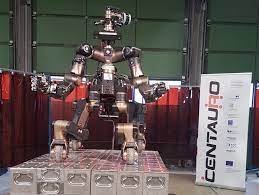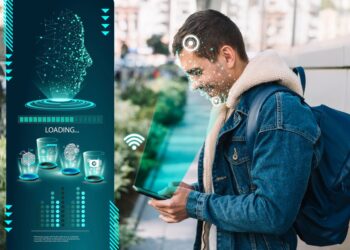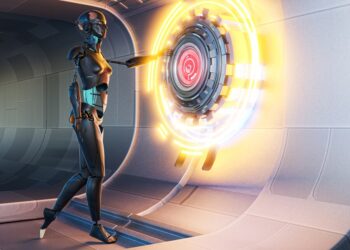The Emergence of Robotics and AI in Disaster Response and Its Impact on Improving Rescue Operations
Disasters come unannounced and often leave a trail of devastation in their wake. Whether it’s a natural calamity like an earthquake, flood or wildfire, or a human-induced disaster such as a terrorist attack, the immediate aftermath of such an event can be catastrophic. Rescue operations are critical in such situations, and the use of robotics and AI is transforming the way disaster response teams operate, making them more efficient and effective.
The impact of robotics and AI in disaster response is already evident, and as technology continues to advance, its role is expected to become even more significant. In this article, we will explore how robotics and AI are being used in disaster response and the benefits they bring.
Robots in Disaster Response
The use of robots in disaster response is not new. However, recent advancements in technology have made robots more capable and effective. There are several types of robots used in disaster response, and each serves a specific purpose.
Firstly, there are unmanned aerial vehicles (UAVs) or drones that can provide an aerial view of the disaster area, allowing rescuers to get a better understanding of the situation. Drones can also deliver essential supplies, such as food and water, to those in need.
Secondly, there are ground robots that can navigate through debris and rubble, searching for survivors. These robots are equipped with sensors and cameras that allow them to detect people and objects even in low light conditions.
Thirdly, there are underwater robots that can be used in situations such as floods or tsunamis. These robots can search for survivors underwater and provide real-time data on water levels and currents.
Robots are particularly useful in situations where it may be too dangerous for human rescuers to enter. For example, they can be used in situations where there is a risk of further collapse or explosions.
AI in Disaster Response
Artificial intelligence (AI) is also playing an increasingly significant role in disaster response. AI can help analyse data, such as images and videos, in real-time, allowing rescue teams to make informed decisions quickly. For example, AI can be used to identify damaged buildings that pose a risk of collapse, allowing rescue teams to focus their efforts on safer areas.
AI can also be used to predict the impact of a disaster and help responders plan their response accordingly. For example, AI can be used to forecast the path of a hurricane or predict the spread of a wildfire. This information can be used to evacuate people from the affected areas and deploy resources more efficiently.
Another use of AI in disaster response is in the analysis of social media data. During a disaster, people often turn to social media to seek help or share information. AI algorithms can analyze this data to identify people in need of assistance and provide real-time updates to responders.

Benefits of Robotics and AI in Disaster Response
The use of robotics and AI in disaster response brings several benefits. Firstly, it can help save lives. Robots can enter areas that may be too dangerous for human rescuers, and AI can help responders make informed decisions quickly, potentially reducing the number of casualties.
Secondly, robotics and AI can help speed up rescue operations. Robots can work continuously without getting tired or needing breaks, and AI can help responders identify the areas that need the most attention, allowing them to deploy resources more efficiently.
Thirdly, robotics and AI can help reduce the risk to human rescuers. In situations where there is a risk of further collapse or explosions, robots can be used instead of human rescuers, reducing the risk of injury or death.
Finally, robotics and AI can help improve the accuracy of rescue operations. Robots and AI can detect people and objects that may be difficult to identify with the naked eye, and AI can help analyzing data and providing real-time updates, allowing responders to make better-informed decisions.
Challenges and Limitations
While the use of robotics and AI in disaster response brings several benefits, there are also challenges and limitations that need to be considered. Firstly, there is the cost of acquiring and maintaining robotics and AI technology. This can be a significant barrier for some organizations, especially in low-resource settings.
Secondly, there is the issue of interoperability. Different robots and AI systems may not be compatible with each other, making it difficult to share data and coordinate operations. This can result in inefficiencies and delays.
Thirdly, there is the risk of technical failure. Robots and AI systems are not infallible, and technical malfunctions can occur, which can result in delays or even failures in rescue operations.

Finally, there are ethical considerations. For example, there are concerns about the use of drones for surveillance and the potential violation of privacy rights. There are also concerns about the use of AI algorithms for decision-making and the potential for biases to be introduced into the system.
Conclusion
The use of robotics and AI in disaster response is transforming the way rescue operations are conducted. Robots can enter dangerous areas and provide real-time data, while AI can help analyze this data and provide insights that can help responders make informed decisions quickly. The benefits of this technology are evident, with the potential to save lives, speed up rescue operations, reduce the risk to human rescuers, and improve the accuracy of rescue operations.
However, there are also challenges and limitations that need to be addressed. These include the cost of acquiring and maintaining technology, interoperability issues, the risk of technical failure, and ethical considerations.
As technology continues to advance, the role of robotics and AI in disaster response is expected to become even more significant. It is essential that we continue to invest in research and development in this area and address the challenges and limitations to ensure that we can maximize the potential benefits of this technology in disaster response operations. Ultimately, the use of robotics and AI in disaster response is about improving the speed, safety, and effectiveness of rescue operations and saving lives.
















